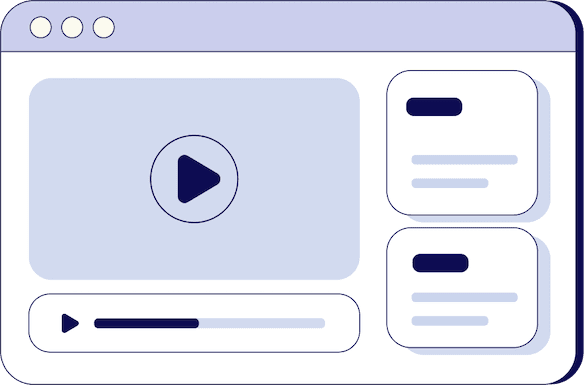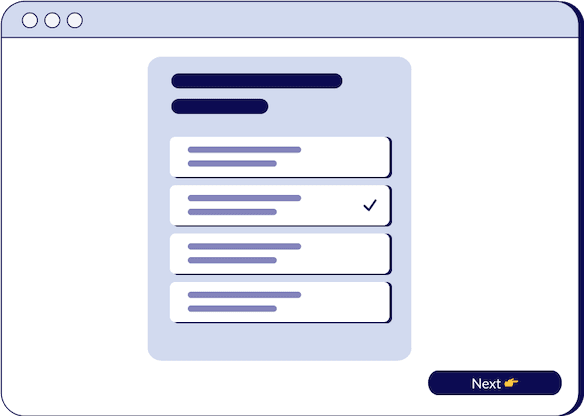
7 Tips for Crafting The Perfect Sales Pitch
Marc Wayshak
Founder, Author & Sales Strategist

- duration
- 8 min
- Average Score
- 82%
- Stars
- 5
Why is the Traditional Sales Pitch Losing Its Edge?
Have you ever considered why the conventional sales pitch often falls short in today's dynamic market? Recent statistics indicate a significant decline in consumer engagement with standard feature-and-benefit presentations. This session delves into the evolution of the sales pitch, emphasizing the shift towards a more insightful, value-based approach. It underscores the critical importance of understanding and addressing the specific needs and challenges of clients, rather than merely showcasing products or services.
The traditional sales pitch, once the cornerstone of sales strategy, has gradually become less effective. In a world where clients are inundated with information and options, the old model of focusing solely on the features and benefits of a product or service is no longer sufficient. The modern sales landscape demands a deeper, more personalized approach. This session explores the transition from a product-centric to a client-centric approach. It's about understanding the client's world - their unique challenges, pain points, and what they truly need from a solution. This approach is about fostering meaningful engagement by showing empathy and a genuine commitment to solving the client’s problems, rather than just making a sale.
The Advantages of a Client-Centric Approach
But why exactly does this client-centric approach lead to more successful sales outcomes? Firstly, it builds trust. When clients feel understood and see that the salesperson is offering solutions tailored to their needs, they are more likely to place their trust in the salesperson's recommendations. Secondly, it establishes the salesperson as an expert and a valuable resource, not just a vendor. Lastly, it differentiates the pitch. In a market where clients are bombarded with generic sales pitches, a conversation that directly addresses their specific needs and offers insightful solutions is more likely to be remembered and valued.
In this session, you will learn the nuances of shifting your sales strategy to a more client-focused approach. It's not just about changing the content of the pitch; it's a fundamental shift in mindset, from selling a product to solving a client’s problem.
Innovative Techniques in Sales: The Whiteboard Pitch
In today's fast-paced and highly competitive business landscape, sales professionals are constantly seeking innovative approaches to captivate their clients' attention and convey complex ideas effectively. With the rise of virtual meetings on platforms like Zoom and an ever-increasing reliance on remote communication, the traditional methods of delivering sales pitches have evolved. Enter the whiteboard pitch, a dynamic and visually engaging technique that has been gaining momentum among sales reps, account executives, and educational content creators alike.
The Power of Visual Aids in Sales
Sales professionals understand the significance of making a memorable impression during a pitch. According to a recent survey, 63% of clients admit to remembering information better when it is presented visually, reinforcing the notion that visual aids can play a pivotal role in sales success. In this session, we'll delve into how utilizing a small whiteboard or digital tools like an iPad can enhance your sales pitch and leave a lasting impact on your clients.
Structuring the Whiteboard Pitch
One of the key advantages of the whiteboard pitch is its ability to structure and simplify complex ideas. Sales reps can use the whiteboard as a canvas to outline the client's challenges, needs, and the proposed solutions in a clear and organized manner. By dividing the whiteboard into sections and utilizing visuals, diagrams, and bullet points, the salesperson can guide the client through the entire sales process seamlessly. This structured approach not only aids in client comprehension but also highlights the salesperson's expertise and authority on the subject matter.
Establishing Expertise and Authority
Incorporating a whiteboard pitch into your sales strategy not only helps you convey information effectively but also positions you as a trusted expert. By visually illustrating your client's pain points and demonstrating how your product or service addresses these issues, you establish yourself as a problem-solver. This authority not only instills confidence in your client but also increases the likelihood of closing the deal.
Adapting for Different Communication Channels
While the whiteboard pitch is particularly effective in face-to-face meetings or virtual Zoom sessions, it can also be adapted for phone conversations. Utilizing descriptive language and vivid storytelling, sales reps can paint mental pictures for clients, even when visual aids aren't physically present. This flexibility allows the whiteboard pitch technique to be applied across various communication channels, ensuring its relevance in today's diverse sales landscape.
Enhancing Client Engagement
Engaging clients during a sales pitch is crucial for maintaining their interest and ensuring they absorb the key messages. The visual aspect of the whiteboard pitch naturally draws clients into the conversation, making them active participants rather than passive listeners. This interactive engagement fosters a deeper connection and understanding, increasing the chances of securing their commitment.
Identifying and Addressing Top Client Challenges
In the ever-evolving landscape of the sales industry, understanding and empathizing with your clients' challenges is the key to building strong, lasting relationships. Successful sales professionals not only identify these challenges but also position themselves as problem-solvers who can provide tailored solutions. In this session, we will explore how to pinpoint the top challenges faced by clients in the sales industry, initiate meaningful conversations, and effectively address these issues.
Initiating Conversations by Pinpointing Challenges
Before you can provide solutions, you must first identify the challenges your clients are grappling with. The ability to ask the right questions and actively listen is paramount in this process. Are you aware that 68% of clients feel more positively about a salesperson who actively listens to their needs? Start by inquiring about their pain points, goals, and objectives. Are they struggling with declining sales, a competitive market, or changing consumer preferences? By probing deeper, you can uncover hidden challenges that they might not have initially disclosed.
Analyzing Root Causes
Once you've identified the challenges, the next step is to analyze their root causes. For example, if a client is experiencing declining sales, delve into why this is happening. Is it due to a lack of effective sales strategies, a mismatch between their products and the market, or internal operational issues? By digging into the root causes, you not only gain a deeper understanding of the problem but also showcase your analytical skills and commitment to finding solutions.
Strategies for Demonstrating Understanding
To truly resonate with your clients, it's essential to demonstrate your understanding of their challenges. One effective strategy is to share relevant success stories or case studies that showcase how you've helped similar clients overcome similar obstacles. This not only builds credibility but also instills confidence that you have the expertise to address their specific needs.
Positioning Your Offerings as Tailored Solutions
With a clear understanding of your client's challenges and their root causes, it's time to position your offerings as tailored solutions. Avoid the one-size-fits-all approach and instead customize your pitch to address their unique pain points. Highlight how your product or service can directly alleviate their challenges and provide tangible benefits. By aligning your offering with their specific needs, you show that you're invested in their success, which can significantly influence their decision-making process.
The Power of Consultative Selling
In the modern sales landscape, consultative selling has become a powerful approach. It goes beyond merely selling a product; it involves becoming a trusted advisor. By actively engaging in conversations, understanding challenges, and offering tailored solutions, you position yourself as a partner in your client's success journey.
By initiating conversations, analyzing root causes, demonstrating understanding, and positioning your offerings as tailored solutions, you can forge deeper connections with your clients and ultimately drive sales growth. In the following sessions, we will delve further into advanced sales strategies that will help you excel in today's competitive market.
Leveraging data-driven insights not only substantiates your sales pitch but also establishes credibility and fosters deeper client engagement. In this session, we'll explore the importance of using data effectively to pinpoint the root causes of your client's challenges, demonstrate your expertise, and master the art of post-presentation conversation to build consultative relationships.
Presenting Data Effectively
Data is only as valuable as its presentation. When presenting data to clients, it's crucial to make it not only informative but also easy to understand. Utilize visual aids like charts, graphs, and infographics to illustrate key points and trends. Clearly articulate how the data relates to their specific challenges and objectives. Remember, data should be a tool for clarity, not confusion.
Substantiating the Root Causes
One of the most potent applications of data is its ability to unearth the root causes of your client's issues. By analyzing historical data and trends, you can pinpoint the underlying factors contributing to their challenges. This not only validates your understanding of their situation but also positions you as an analytical problem-solver. Clients are more likely to trust your recommendations when they see that they are based on solid data.
Establishing Credibility with Data
Incorporating data into your sales pitch also plays a pivotal role in establishing credibility. Data-backed claims are more persuasive, and they instill confidence in your client's decision-making process. Share success stories and case studies that showcase how data-driven strategies have led to remarkable outcomes for other clients. This not only builds your credibility but also reinforces the notion that you are a results-oriented partner.
Engaging in Post-Presentation Conversation
Engaging your client in meaningful post-presentation conversations is an art in itself. The key is to ask the right questions. Instead of simply seeking a commitment, focus on understanding their perspective and needs. Use open-ended questions that encourage them to share their thoughts and concerns. This approach demonstrates your commitment to their success and fosters a consultative relationship.
The Disqualification Process
An often overlooked technique in post-presentation conversations is the disqualification process. While it may seem counterintuitive, disqualifying a prospect can actually lead to deeper discussions. By probing into potential objections and reservations, you can uncover valuable insights and address any lingering doubts. This not only ensures that you are pursuing the right opportunities but also builds trust as you show a genuine interest in resolving concerns.
In conclusion, data-driven insights and engagement are essential components of modern sales strategies. By presenting data effectively, substantiating root causes, and establishing credibility, you lay the foundation for successful client relationships. Moreover, engaging in post-presentation conversations and utilizing the disqualification process allows you to truly understand your client's needs and concerns, ultimately leading to consultative and long-lasting relationships. In the world of sales, data is not just information; it's your key to unlocking success. Watch this session to learn more about harnessing the power of data in your sales journey.
How Triple Session works
Training, Testing, & Feedback
Triple Session's proven formula accelerates your sales performance through consistent, organized practice, backed by measurable results.

Bite-Sized Knowledge
Our expert-led video sessions simplify complex sales concepts into easy-to-digest 5-15 minute videos for better retention.

Test Your Understanding
After each session, there will be a quiz to test your understanding and help you improve on any areas that need more attention.

Evaluate and Grow
Get progress snapshots after each quiz to track your improvements and achieve your sales mastery goals.